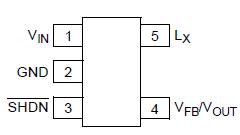MCP1603: Features: • Over 90% Typical Efficiency• Output Current Up To 500 mA• Low Quiescent Current = 45 A, typical• Low Shutdown Current = 0.1 A, typical• Adjustable Output Vo...
floor Price/Ceiling Price
- Part Number:
- MCP1603
- Supply Ability:
- 5000
Price Break
- Qty
- 1~5000
- Unit Price
- Negotiable
- Processing time
- 15 Days
SeekIC Buyer Protection PLUS - newly updated for 2013!
- Escrow Protection.
- Guaranteed refunds.
- Secure payments.
- Learn more >>
Month Sales
268 Transactions
Payment Methods
All payment methods are secure and covered by SeekIC Buyer Protection PLUS.

 MCP1603 Data Sheet
MCP1603 Data Sheet








